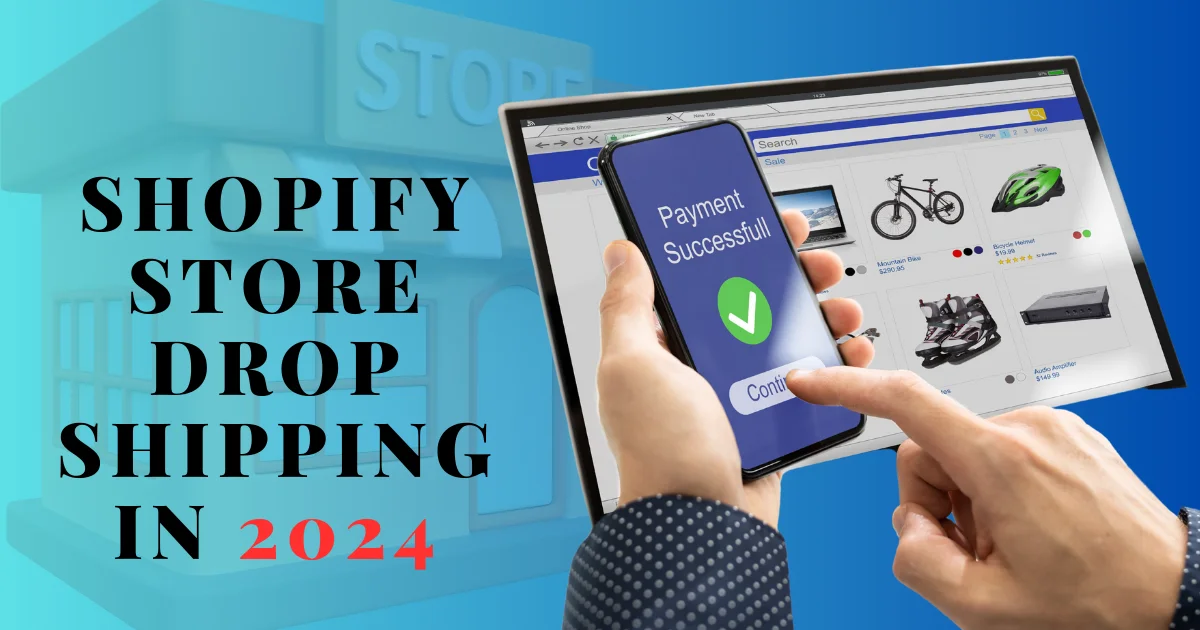Operating multiple Shopify stores as a dropshipping strategy gives a strong impetus for the expansion of one’s own e-commerce business. It provides the opportunity for business owners to explore new niches, reach out to different customers, and add more streams of income. But at the same time, this also has its own problems, ranging from operational issues to marketing specifics.
Thank you for reading this post, don't forget to subscribe!This guide explores the why, how, and what of running multiple Shopify stores with the aim to cover each vital aspect you need to be victorious in this venture.
Why Manage Multiple Shopify Stores?

At first, it might sound troublesome to have multiple Shopify stores, but it has some significant advantages:
1.Reach Out to Different Niches
Why it is important: Specific needs drive customers into particular stores as they feel the business understands their needs.
For instance:
Store A: This is for people who love working out and need exercise equipment.
Store B: This is aimed at environmentally friendly consumers who want only green products.
Store C: This is for people who need gadgets for their work.
This segmentation means that one can gain dedicated clients, improve trust, and appreciate increased conversions.
Never Put All Your Eggs In One Basket

Too many stores mean you are able to control risk. When one niche has gone out of control or is generating too little sales, other ones will shield your earnings.
For example: A store which is marketing pet supplies may only have some few sales during festive seasons, however a store focused on electronics may have high steady turnovers throughout the year.
Customized Branding
Taking care of the branding of every particular store allows for better targeting of the customers at hand. The only way to operate a business, especially in today’s competitive landscape, is through specialisation.
Steps To Open Multiple Shopify Accounts
Explained here is a replication of this and how Shopify can be used to set up multiple stores, which can themselves be shops and support their own brand with a replication structure.
Step 1: Create a Shopify Account
It is not possible to manage different stores using the same accounts on Shopify. Each store must be subscribed separately.
Choose the subscription plan basing on the scale of your storefront and the resources available to you, starting with the basic plan which is for most first time users is enough.
Step 2: Get a Domain Name
Niche related domains would give your store a higher recognition level and at the same time appealing to their market target.
Good example: A good domain name is GreenHomeEssentials.com, which is perfect for items that are of a sustainable nature.
Poor Example: A poor example is GeneralGoodsOnline.com, which needs to be narrower.
Step 3: Customise Your Store
For aesthetics, pick a theme that best suits your niche.
For a fitness niche, we recommend very colorful and robust designs.
If you are focusing on home decor, we recommend going for simple designs.
Make sure to include all aspects of your brands including branding, your brand themes and as well as images of products that pique the interest of the customers in your target market.
Step 4: Sourcing and Adding Products:
Use DSers or Oberlo to import products to your storefront. These applications greatly relieve the hassle of searching for dropshipper suppliers as they will come inbuilt with the application and help in backend syncing of the stock.
Compose vibrant product descriptions in your voice to help with SEO and gain customers’ trust faster.
Supplier Coordination Over Multiple Stores

Any dropshipping business will only operate well with reliable suppliers. However, the coordination of suppliers becomes more paramount when running several stores.
Key Strategies:
Supplier Diversity
Only put some eggs in one supplier basket for all your stores.
For example, you can use Spocket for EU/US suppliers and AliExpress for other global product varieties.
Supplier Relationships
Develop long-term relationships with the suppliers to be able to secure discounts, shorter processing times or even exclusive product offerings.
Backup Suppliers
Stock up on alternative suppliers in case your primary partner runs out of stocks or has delivery delays.
Supplier Evaluation Metrics:
Speed of delivery – are they able to ship out the parcel within the promised time?
Product rating – are you receiving good reviews all this while?
Communication – Are the suppliers responsive to queries or order problems?
Custom Fixed prices per Customer in Shopify
Custom pricing is one advanced feature that you can utilise to set your business apart and increase sales. Creating more personalised experiences by providing custom tailored prices to selected customers like VIPs and wholesale customers helps to retain the customers.
How It Works
You can set up online stores in the Shopify platform and offer specific pricing to individual customers using apps like:
Bold Custom Pricing – allows bulk purchasing or individual customer prices to offer different prices depending on how many items are purchased.
Wholesale Club: Encompasses B2B shops, or wholesale pricing can be exclusive.
Example in Action
Standard Price – £50.
VIP Customer Price – £45 (Limited Edition offer).
Bulk Buyer Price – £40 (units more significant than ten only).
Benefits:
Boosts repurchases.
Gives high-paying clients a sense of exclusivity.
Increases order value by encouraging wholesale or bulk purchases.
Dropshipping Your Business The Machine Way
Some subversion is required when one operates multiple stores. If not, it’s repetitive actions such as inventory screwing and order achieving that would mess up your operations altogether.
Automation Tools to Use:
Product Importing:
Applications like Oberlo and DSers permit one to import elements from a supplier and even describe the level of availability.
Inventory Management:
Synchronize inventory on Multi-Store Sync Power and Inventory Management across stores, doing it on a store-by-store basis and Merchants as well.
Example: Say one sells out of a product in Store A; rather than risking an overselling situation, Store B is automatically told not to sell it.
Order Fulfilment:
Shopify Flow or ShipStation lets you automate order confirmation and tracking notifications.
Customer Support:
Total inquiries from all customers of different stores should be consolidated using one application, Gorgias or Zendesk.
How to Market When There are Several Stores
Marketing is where you make your many stores memorable, and it matters a lot. Each store ought to have a targeted strategy that fits its target audience.
SEO Optimisation
Use Google Keyword Planner to learn how to create content that resonates within a specific niche.
Example: In the case of an eco store, include words such as ‘ecological kitchenware.’
Write blogs and product descriptions that utilize these keywords in an organic way.
Social Media
Create distinct profiles for each store. Remember to adjust the content to the audience.
Use Instagram if you are working in visually heavy industries, such as fashion or décor.
Consider using LinkedIn for business-related local niches, such as office supplies.
Email Campaigns
Customise campaigns according to customer purchase patterns.
For example, users who abandon their online carts can send a cart abandonment email offering a discount.
Problems Associated with the Multi Shopify Store Business Model
There are some drawbacks associated with multiple-store management:
Operational Complexity
Managing multiple orders, stock, and customer queries across various channels can be stressful.
Solution: Use advanced solutions and outsource customer queries to online workers.
Supplier Coordination
If suppliers are late in deliveries, it can create a negative image for your business.
Solution: Constantly evaluate the performance of your suppliers and always have a plan B.
Marketing Fatigue
Having several marketing initiatives for each of your stores can leave you stretched.
Solution: Design a comprehensive marketing strategy and use templates for constant email marketing.
FAQs
Q1: Can three stores be operated on the same account?
No, Shopify pairs a store with an account. Nonetheless, centralizing procedures like updating inventory levels or tracking orders is possible using other applications like Shopify Flow.
Q2: How can one maintain inventory among multiple stores?
Employ Multi-Store Sync Power applications to improve inventory amounts across different stores automatically and in real time as a way of restraining the chances of overselling or stockouts.
Q3: Can you recommend one tool for custom pricing that works best?
With Bold Custom Pricing, selected customers can be offered a tiered or exclusive pricing structure with different levels or offerings.
Q4: Is the cost incurred in owning more than one store reasonable?
Definitely yes, because each store is sold with a plan compatible with Shopify; a store will need to purchase its own plan. Still, cut back on store operational expenses through automation and the outsourcing of routine operations.
Q5: Is it possible to use one supplier for each store?
Yes, but check that the supplier is able to support the quantity and distribution of every store that it is to supply. However, it is reasonable to recommend that suppliers be diversified in order to minimise risks.
In Summary
Having multiple Shopify stores for dropshipping is an effective scalable strategy to not only seek different streams of revenue but also to cater for different market niches and create a multi-brand empire. Provided the automation, the supply chain, and the marketer are well-defined, complex operations can be transformed into a functional and profit-bearing business.
Achieving success will need some effort in making proper plans and executing them, but thanks to the insights and tools discussed here, you are ready to make it happen.
